NAINITAL HISTORY
TENNIS TOURNAMENT IN FLATS - 1899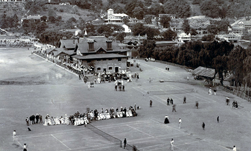

Tennis Tournament, Nainital, 1899 Macnabb Collection (Col James Henry Erskine Reid): This album of Indian views, Oriental and Indian Office collection is there at British Library.
If you see carefully the Capital Cinema building is far away from lake because this building caught fire in 1900's & a new building was built later.
NAINITAL LANDSLIDES - 18 SEPTEMBER 1880
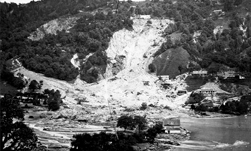

Nainital has endured many landslides during the first 50 years of its settlement with one of the first landslides in 1867, when the hillside above west end of the bazaar gave way and roads were extensively provided with drains thereafter.
EAGLE VIEW OF NAINITAL LAKE 1885
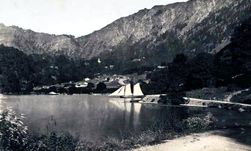

It is believed that the worship of the three sages resulted in filling up of the dug hole with water, drawn from the sacred Mansarovar Lake. Hence, the localities consider it sacred to take a dip in Naini Lake. The historical records say that the lake was discovered in 1839, when Lord P. Barron, a British businessman, came across this lake on a hunting expedition.
THE SPORTS GROUND AT NAINITAL - 1885
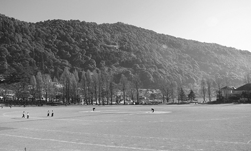

Photograph of a Cricket Match at Nainital from the Macnabb Collection (Col James Henry Erskine Reid): Album of views of 'Nainital' taken by Lawrie & Company in 1899. The area of the Kumaon Hills had come under British rule after the Anglo-Nepal war (1814-16) but it wasn't until 1841 that Lord P. Barron built the first European house in Nainital.
NAINA DEVI TEMPLE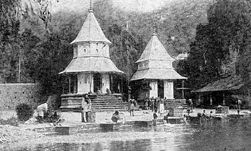

Though the Naina Devi temple is named after Naina Devi (another name for Sati), the biggest social occasion here is the festival held in honor of Nanda Devi, the patron goddess of Kumaon hills and a local princess Sunanda Devi. On the northern side of the lake a temple was built, dedicated to Sati and is called the Maa Naina Devi temple. The Naina Devi temple is situated atop Naina hillock in Nainital. Thousands of pilgrims gather here every year around September to worship goddess Parvati.
GOVERNOR HOUSE - RAJ BHAWAN - 1815
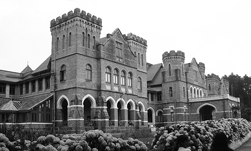

The British occupied Kumaon & Garhwal in 1815. After the British occupation, Mr. E. Gardiner was appointed as the commissioner of Kumaon Division on May 8th 1815. In 1817 the second commissioner of Kumaon, Mr. G.W. Traill had conducted the second revenue settlement of Kumaon. Mr. Traill was the first European to visit Nainital but he did not popularize his visit in respect for the religious sanctity of the place.











